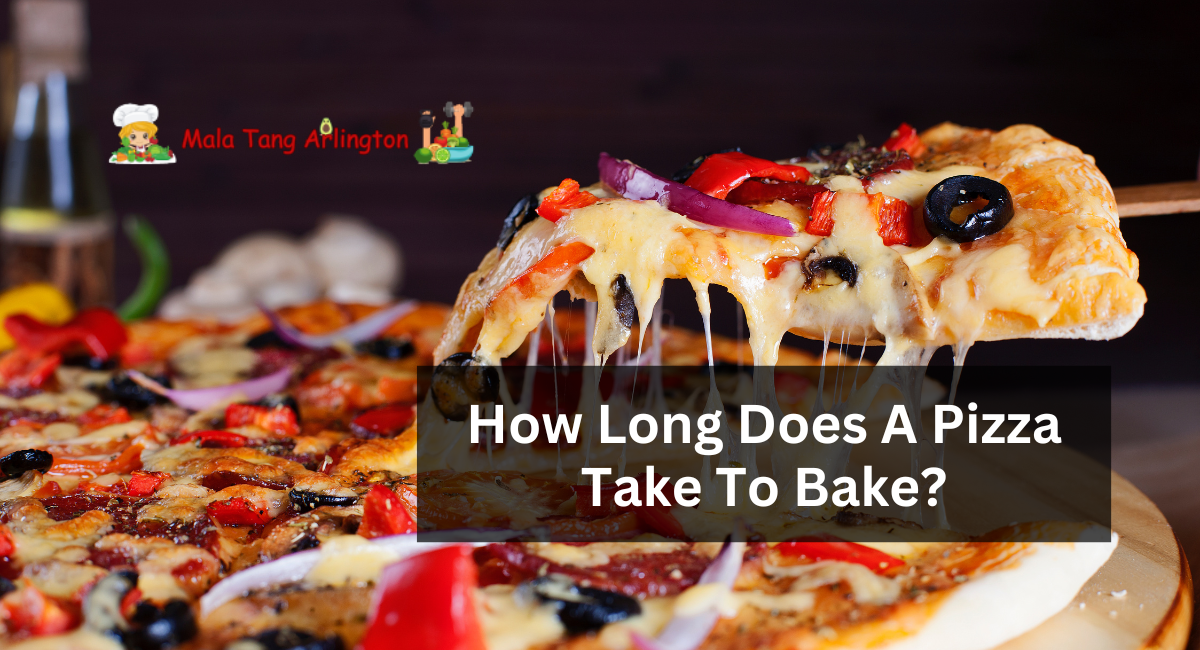Few culinary treats can compete with a well-made pizza in terms of global appeal. Whether you choose classic Margherita or more creative toppings, the baking time is the key to pizza excellence.
In this article, we’ll look at the factors that influence how long a pizza takes to bake, and we’ll give you some helpful hints for getting that delectable, golden-brown crust and gooey cheese.
How Long Does A Pizza Take To Bake?
The time it takes to bake a pizza depends on various factors, including the type of pizza, its size, and the temperature of your oven. Following are some general guidelines:
Pizza Variety
Frozen Pizza: Frozen pizzas are often pre-cooked to some extent before freezing, requiring less time in the oven. The baking time varies according on the brand and type of frozen pizza.
Homemade or Fresh Pizza: The baking time for homemade pizza depends on the thickness of the dough and the number of toppings used. Thicker pizzas often take longer to bake.
Thin Crust Pizza: Thin crust pizzas are often stretched out very thinly, allowing them to cook faster and crisp up faster.
Thick Crust or Deep-Dish Pizza: Because the dough layer on these pizzas is thicker, they require a longer time to cook thoroughly.
Temperature In The Oven
The temperature of your oven has a big impact on how long it takes to bake your pizza. Higher temperatures, such as 450°F to 500°F (232°C to 260°C), cook the pizza faster, but lower temperatures take longer.
Pizza Sizes
Larger pizzas inherently take longer to bake than smaller ones. The baking time must be adjusted based on the size of the pizza.
Toppings
The type and quantity of toppings you use on your pizza can influence the baking time. Pizzas with a lot of toppings, especially those with a lot of moisture, such as fresh tomatoes or mushrooms, may require more time to cook and evaporate excess moisture.
Thickness Of The Pizza
The thickness of the dough might vary even within the thin or thick crust categories. A thick dough takes longer to cook thoroughly, whereas a thin dough cooks rapidly.
Baking Sheet Or Pizza Stone
Using a pizza stone can help to properly transfer heat and result in a shorter cooking time. It may take a little longer to bake if you use a standard baking sheet or pan.
Preheating
Before putting the pizza in the oven, ensure it’s completely preheated. Preheating the oven make sure that the temperature is correct from the start, which can alter the overall cooking time.
Texture And Visual Cues
Keep an eye on your pizza while it bakes. Look for golden-brown crust and bubbling, melting cheese as visual indications. Adjust the baking time accordingly because the desired amount of doneness varies from person to person.
How To Make Pizza At Home?
Ingredients
- 1 pound pizza dough, at least 1 hour at room temperature
- 1 cup sauce (white sauce, tomato sauce, or other spread)
- 2 to 3 c. Other options include sautéed onions, mushrooms, pepperoni, cooked sausage, cooked bacon, sliced peppers, leftover veggies, or any other favorite toppings.
- 1 to 2 cups shredded or sliced cheese of your choice, such as mozzarella, Monterey Jack, provolone, fontina, or any other favorite
- Optional: cornmeal or all-purpose flour
Equipment
- Baking sheet or pizza stone
- baking sheet or pizza peel
- Optional: parchment paper
Instructions
1) Preheat The Oven To 550°F
Heat the oven to 550°F or higher and arrange a rack in the lower-middle section (if you have a baking stone, place it on the rack). Don’t be hesitant to turn the heat all the way up to high, as this will help create a crunchier and more flavorful crust. Allow at least 30 minutes for the oven to heat up.
2) Cut The Dough In Half
One pound of dough yields two 10-inch pizzas. Split the dough in half and cover one half with an upside-down bowl or a clean dish towel while you make the first pizza.
3) Roll The Dough Out
Tear a large piece of parchment paper about 12 inches long. Form a large disk with your hands and set it on the paper, working with one piece of dough at a time.
With your hands or a rolling tool, flatten the dough to a thickness of 1/4 inch or less. If the dough begins to shrink, allow it to settle for five minutes before rolling it out again.
4) Arrange The Toppings On The Pizza
Place one-half of the sauce in the center of the pizza and spread it to the perimeter with the back of a spoon. Half of the toppings and cheese should be piled on top.
5) Cook The Pizza
Using a pizza tray or the back of a baking sheet, transfer your pizza (with the paper or cornmeal) onto the baking stone. If you lack a pizza stone, you can bake pizza on a baking sheet.
Bake the pizza for 5 minutes before rotating it. Remove the parchment from beneath the pizza and dispose of it.
Additional 3 to 5 minutes, or until the cheese is melted and faintly caramelized and the crust is golden brown.
6) Cut Into Slices And Serve
Set the pizza on a cooling rack so it can cool down a bit, just until you can handle it. Transfer to a cutting board and cut into pieces before serving. Repeat with the remaining dough, cheese, and toppings to make a second pizza.
How Do You Tell When The Pizza Is Done?
The type of pizza, the oven temperature, and personal preference all play a role in determining when a pizza is done. Here are some broad rules for determining whether a pizza is perfectly cooked:
Crust Color: The color of the crust is the most prevalent indicator. The crust of a well-baked pizza will be golden brown. Keep an eye on the edges; if they turn a beautiful shade of brown, it’s a positive sign.
Melted and bubbling cheese: If your pizza contains cheese, it should be melted and slightly bubbly. The cheese should be gooey and turning a light golden color.
Crispy Bottom: Check the bottom of the pizza with a spatula or pizza peel. It should be slightly toasted and crunchy.
Thumping: A thumping technique is used by some expert pizza makers. Tap the crust gently with your finger or a utensil. It’s probably done if it sounds hollow.
Internal Temperature: Use a kitchen thermometer to find out how hot the pizza is inside. It’s usually done when the central temperature hits 190-200°F (88-93°C).
Time and Recipe: Stick to the cooking times and temperatures specified in your pizza recipe. These principles are almost always correct.
Personal Preference: The “doneness” of a pizza is ultimately subjective. Some people prefer a softer crust, while others prefer a crisper crust. The time it takes to cook can be changed to fit your needs.
The art of making the ideal pizza is a culinary art, and mastering the baking time is a critical step toward pizza perfection. Understanding these characteristics can help you achieve that delicious combination of crispy crust, bubbling cheese, and savory toppings, whether you’re making your own masterpieces or savoring a slice from your favorite pizzeria.
Thanks for reading. I hope you find it helpful.










